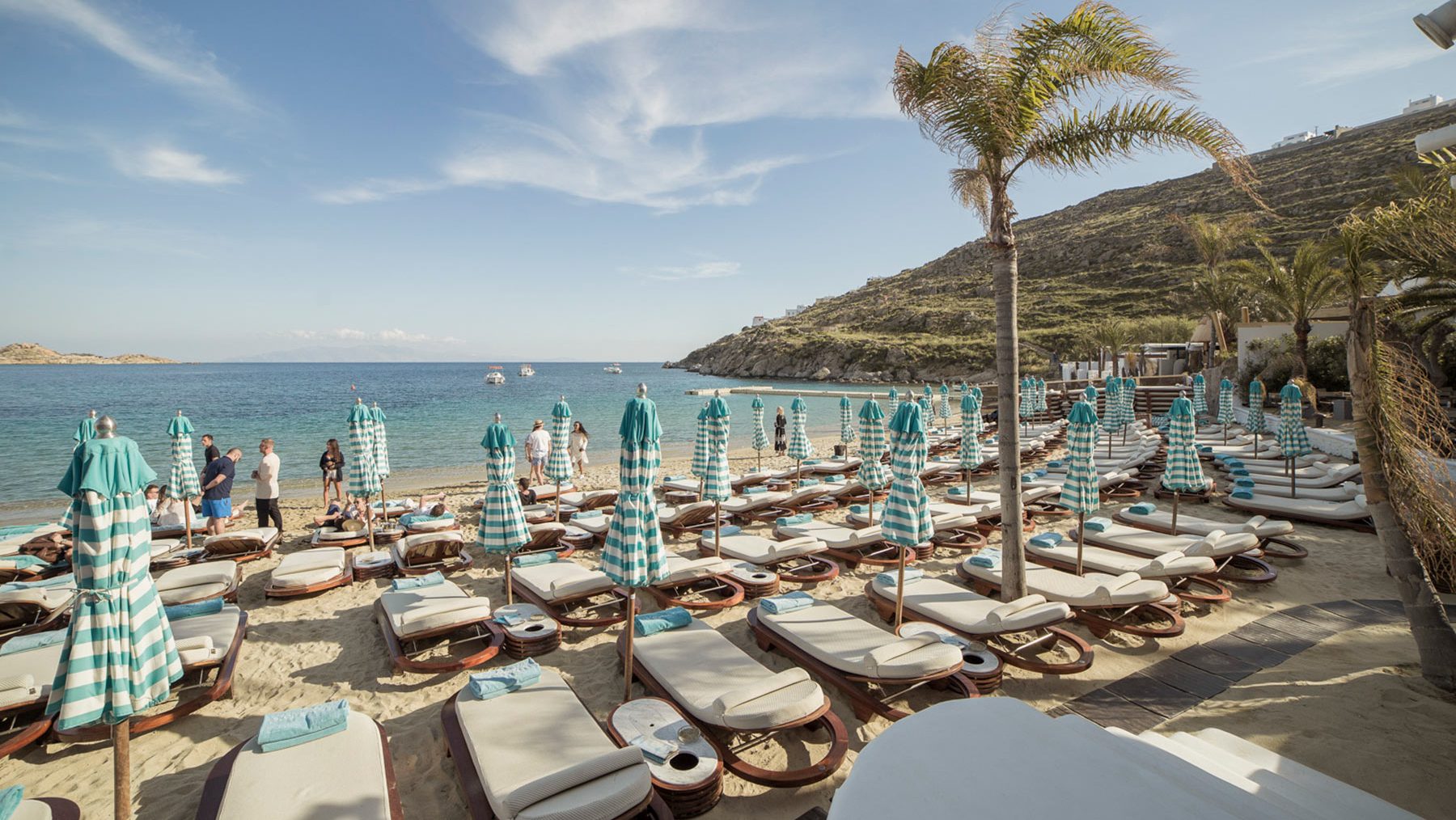
Mykonos
The Wildest Place on Earth
Jackie Kennedy Onassis
I arrived on Mykonos with my Couri family and friends, and we were driven to our ten-bedroom villa, where our chef and staff of six were waiting with a superb dinner of local fare. mlv.villas
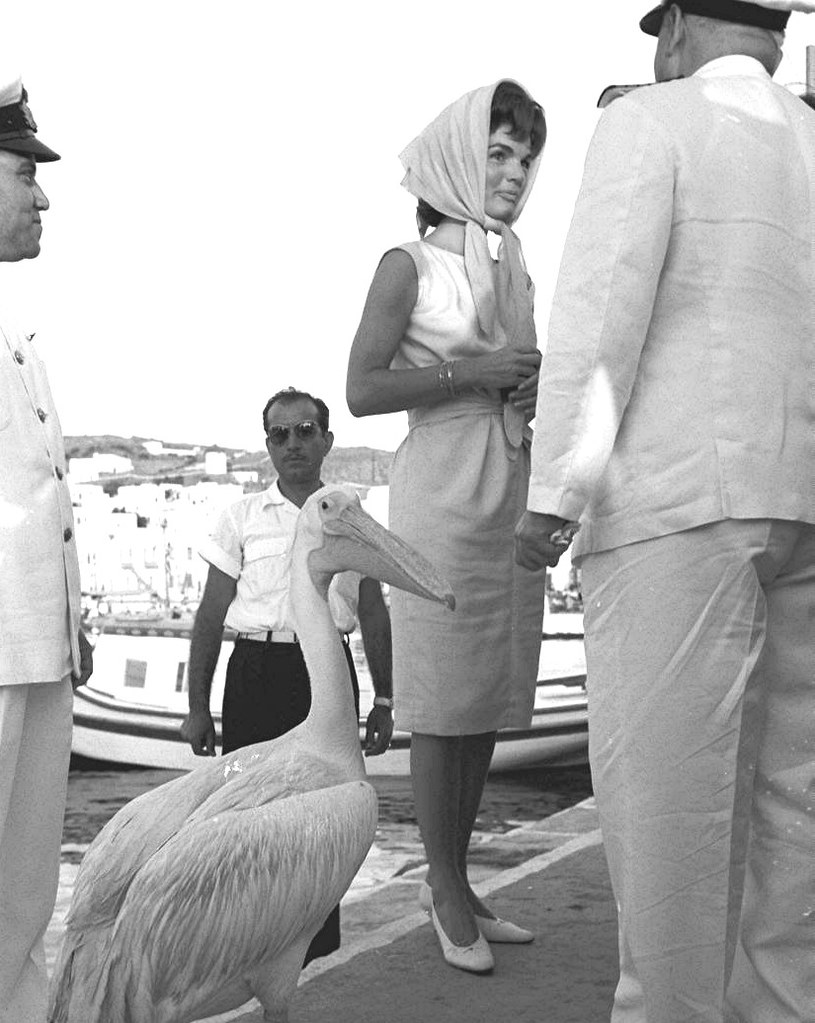
Known for its decadent nightlife, nude beaches, and swanky beach clubs like Nammos and Princepote, Mykonos has plenty to offer for every taste – fabulous family-friendly beaches, water sports, cultural experiences, great shopping from tourist trinkets to Chanel, charming towns to explore and the famous windmills that are the island’s most-photographed site. Mykonos is also a longtime magnet for the jet set and their mega-yachts Over the decades, chic guests, have included Princess Grace, Elizabeth Taylor, Brigitte Bardot, Marlon Brando, Princess Soraya, the wife of the Shah of Iran, and Jackie O, for whom a beach club is named, and where you can see a fun drag show during lunch. During our stay, we even had dinner at Nomea next to Jeff Bezos and Lauren Sanchez, we all had the hot spot’s signature lobster and pasta dish. The richest man in the world and his fiancé were staying on their $500 million super yacht, named Koru. Also anchored offshore was the Maltese Falcon, the world’s most glamorous sailing yacht. I highly recommend cruising on this elegant boat. I was lucky enough to sail on it twice, once to Tahiti and again to the British Virgin Islands. It’s the only way, really.
King Pavlos of Greece, Mick Jagger, Ariana Grande & Leonardo DiCaprio
Once a sleepy fishing port, Mykonos first took the fancy of high society in the early 1950s as a stop on the honeymoon cruise of Greek royals King Pavlos and Frederica of Hanover. The royal couple and their guests were so enamored of the island’s beauty that they returned for a second visit, and its popularity skyrocketed among wealthy Greeks like Stavros Niarchos, Aristotle Onassis, and Maria Callas.
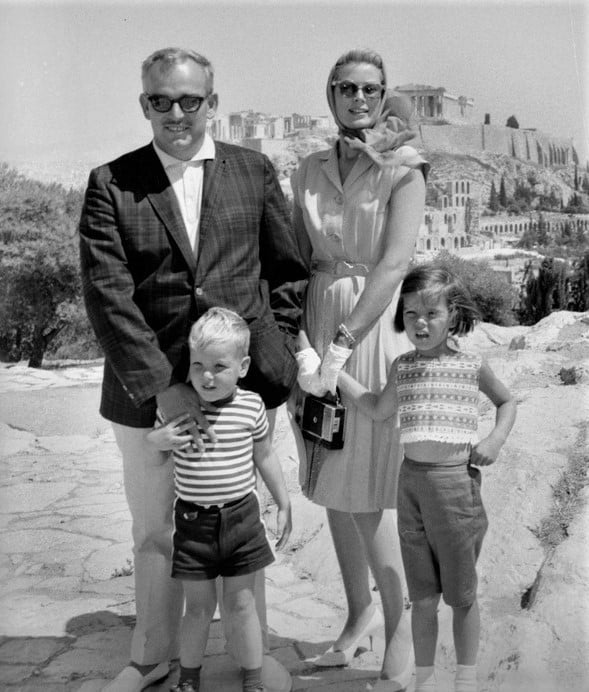
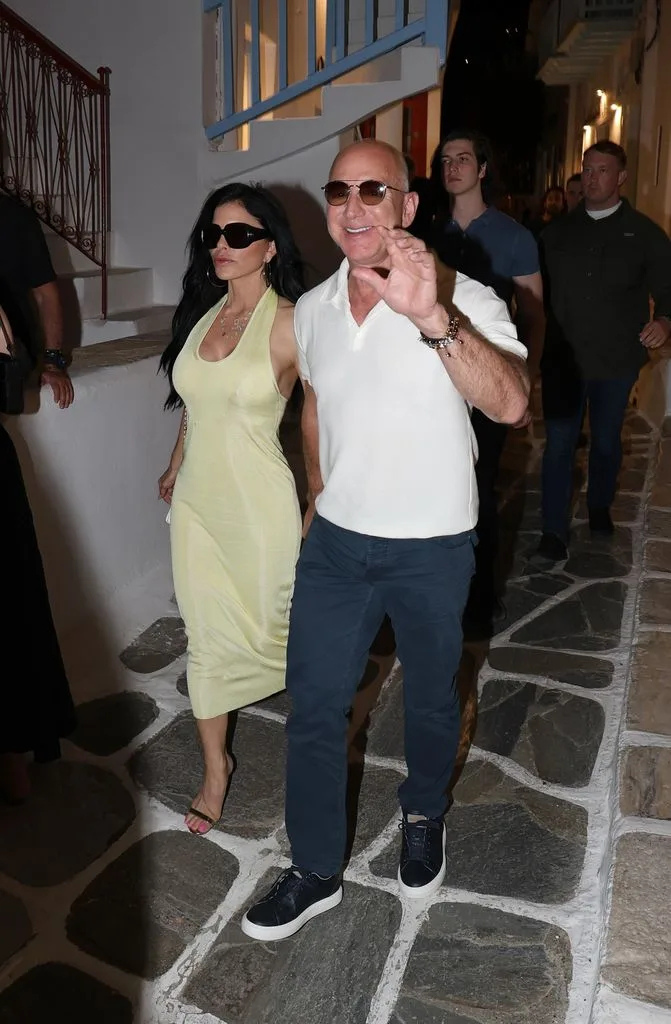
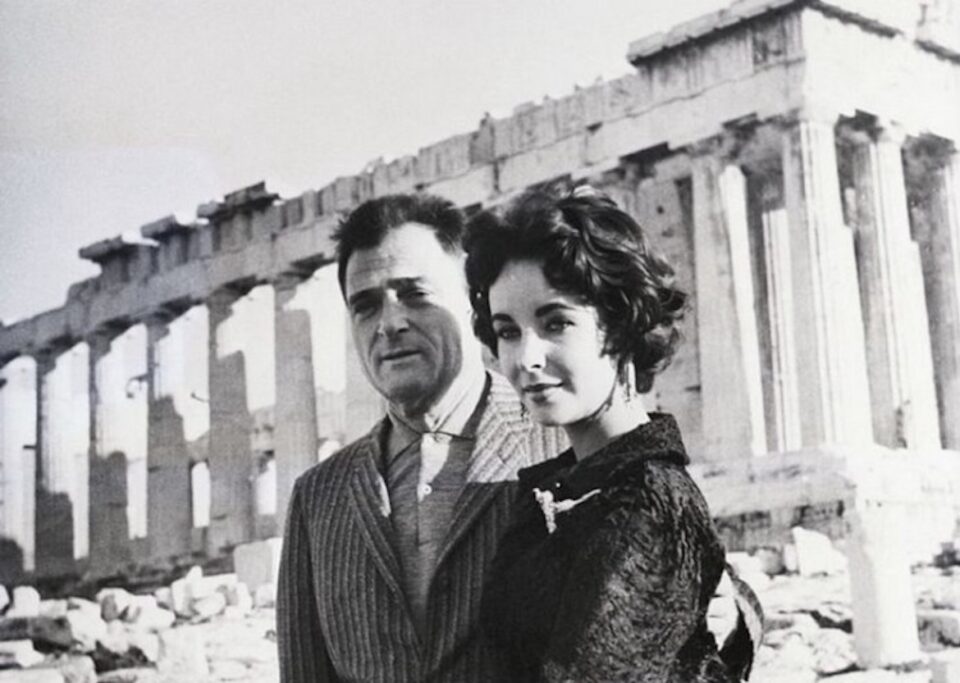
It remains a favorite of the wealthy today – Mykonos is among the world’s top destinations for private jets – and famous folks still flock there in droves. In recent years Mick Jagger, Leonardo DiCaprio, Sharon Stone, Alessandra Ambrosio, Demi Moore, Gerard Butler, Linda Evangelista, and Ariana Grande have all enjoyed this jewel of the Aegean. In 2024 alone, high-profile visitors included Matt Damon, George Clooney, Gigi Hadid, and Mariah Carey.
Della Rounick, Queen of Mykonos
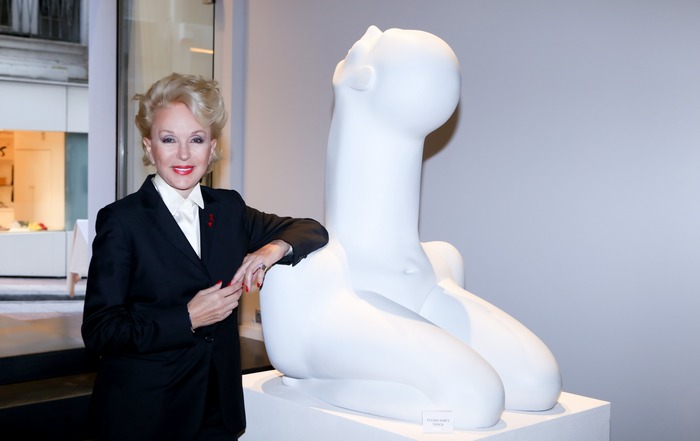
Greek American artist and philanthropist Della Rounick has lived an extraordinary life shaped by Greece and the world at large. Born in Macedonia, she modeled internationally before marrying fashion mogul Herbert Rounick, eventually leading his company after his death. Though her life included global romances and jet-set adventures, Greece remained her anchor. After 9/11, she built a home in Mykonos and later opened the Della Rounick Gallery in Athens, where she showcases her art and others’. A sensual pair of her sculptures grace the entrance of Princepote, the island’s most exhilarating beach club.
Sumptuous Dining
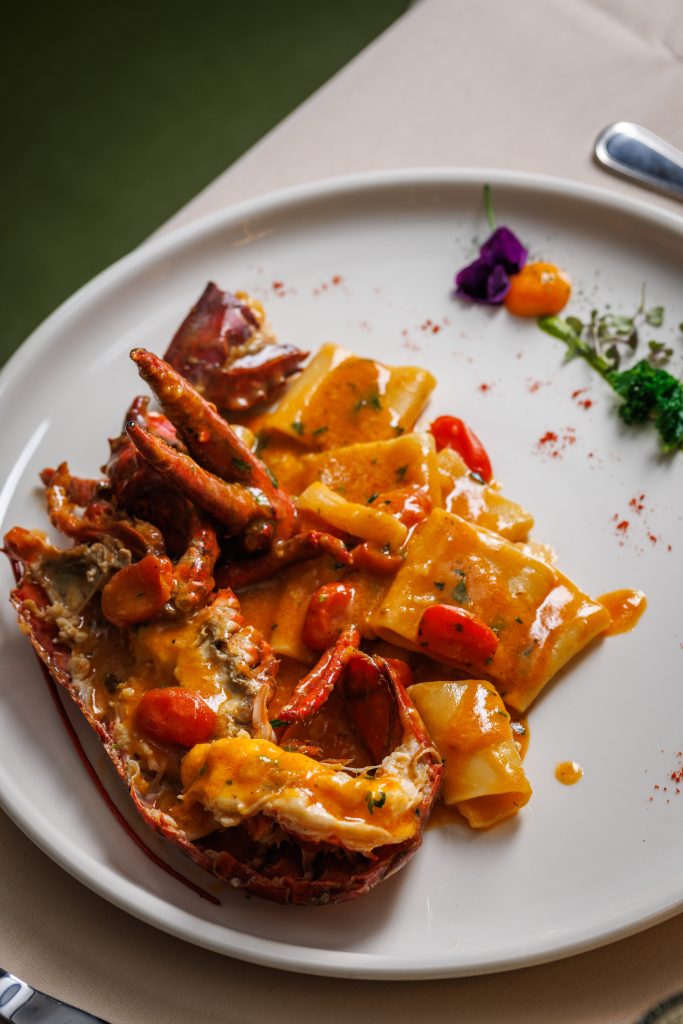
Even having an excellent chef at our villa, we still chose to sample some of Mykonos’s finest dining spots during our stay. Bonus: many restaurants have spectacular ocean views, so dinner or drinks during sunset is sublime. Our crew was ten strong, from teenagers to their parents, so we checked out a diverse selection of the dining scene. We took in swoony sunsets over dinner at Scorpios Beach Club restaurant, Buddha Bar at the Santa Marina Hotel, and Kastros in Little Venice. We dined at Zuma, Kinjo, Apaggio Seaside Restaurant, Rizes Folklore Farmstead, Nice n Easy, BeefBar and Katrin. We tore ourselves away from the poolside, with its spectacular view of the sea and sunset, for lunch at Nammos Beach Restaurant and Alegmagou Beach Restaurant.
All terrific. First on my agenda when back in NYC: SoulCycle!
What To See & Do in Mykonos
The Capital City: Chora, Little Venice
Exploring the charming, twisting streets of Chora, Mykonos’s beautiful, whitewashed capital, is a delight. Legend has it that the seemingly impenetrable maze-like street layout was designed to deter invading pirates from finding their way into the center of the city or getting back out. Today, in the pirate-free era, this confusing, but fun, setup makes for delightful wandering through charming alleys and squares.
The neighborhood of Little Venice is one of the most stunning places on the island, studded with gorgeous historic homes built by prosperous ship captains of long ago. Many of them now house restaurants, bars, shops, and nightclubs with spectacular sea views, perfect for taking in the sunsets. The area is buzzing day and night, so it’s attractive for families and night owls alike.
The Windmills of Kato Mili
While in Little Venice, don’t miss the famous windmills dating back to the 16th century. The windmills were originally used to provide wind power for grinding grain. Yep, back before electricity, green energy was all the rage. The hilltop views overlooking Little Venice and all of Chora and its harbor are glorious. Grab a seat in the small square across from the windmills, open a bottle of wine, and be mesmerized by the orange and pink skies as dusk settles in.
Soak up a bit of history at the Aegean Maritime Museum, which is nearby. The historic area of Alefkandra is also close to the windmills, lovely for a stroll with plenty of cute restaurants and bars to have a bite or a tipple with seaside views. In the evenings, revelers flock here for music and partying.
Ano Mera
Ano Mera is the second biggest city on Mykonos, and as the island’s only inland town, it has a quieter atmosphere, a change from the beaches and nightlife in Chora. It’s also a quick ride away, only 5 miles from Chora – Mykonos is a small island. In Ano Mera’s narrow cobbled streets, you’ll find some fascinating sites like the ruins of Gyzi, a 13th-century Venetian-style castle, and a couple of beautiful ancient monasteries, Panagia Tourliani and Paleokastro.
In summer Ano Mera is home to unique fairs known as panigiri featuring wonderful food and wine and typically lasting until dawn. Highlights include the panigiri of Saint Marina on July 17th and a weeklong celebration of the Virgin Mary each August with a bazaar on the village square.
Delos: Home of the Greek Gods
Believed to be the birthplace of the twin gods Apollo and Artemis, Delos is a small, rocky island about 30 minutes by boat from Chora’s port. You’ll be transported back thousands of years to a partially intact ancient Greek society with temples, houses, and marketplaces adorned with statues and sculptures that paid tribute to its deities.
A UNESCO World Heritage Site, Delos was once the religious and political center of the Cyclades. Because of its mythological significance as the birthplace of gods, the ancient Ionians made Delos their religious capital. It fell victim to rampant piracy and after a Roman attack in 88 B.C. Delos was abandoned. Its rich history was discovered during an archeological excavation in the late 19th century.
Today, you can wander about the ancient ruins of once-monumental structures like the Propylaea, a grand marble archway, and the Sanctuary of Apollo. Many artifacts can be seen at the Archeological Museum of Delos.
Rhenia Island
Rhenia Island, located southwest of Mykonos past Delos, is quiet and uninhabited, steeped in wild nature and Greek mythology. Around 530 B.C., the tyrant Polycrates conquered Rhenia and dedicated it to Apollo, the Olympian god of oracles, prophecy, archery, poetry, music, and healing. Rhenia is an easy hop from Delos, so people often visit both on the same day. You can also swim and snorkel in crystal blue waters off Rhenia.
Archaeological Museum of Mykonos
Located at the Chora harbor overlooking Delos, the circa 1902 Archeological Museum of Mykonos houses artifacts discovered during the excavation of a “Purification Pit”, a repository for urns of cremated remains, on Rhenia island. Relics on display include vases, jewelry, and pottery dating as far back as the 25th century B.C., as well as artifacts relating to the history of Delos’ ancient shrines. Notable for history buffs, the museum has a large piece of pottery with scenes from the fall of Troy.
Mykonos Beach Clubs
Then there’s the famous Mykonos party atmosphere. The island, known as the Ibiza of Greece, is a hotbed of partying both day and night with a variety of clubs, bars, and beach clubs catering to all tastes. It’s also a longtime mecca for LGBTQ+ tourists with many venues serving that community. It’s a hopping gay scene that draws attractive revelers from around the world. Here I’ve rounded up some of the island’s best beach clubs.
Princepote
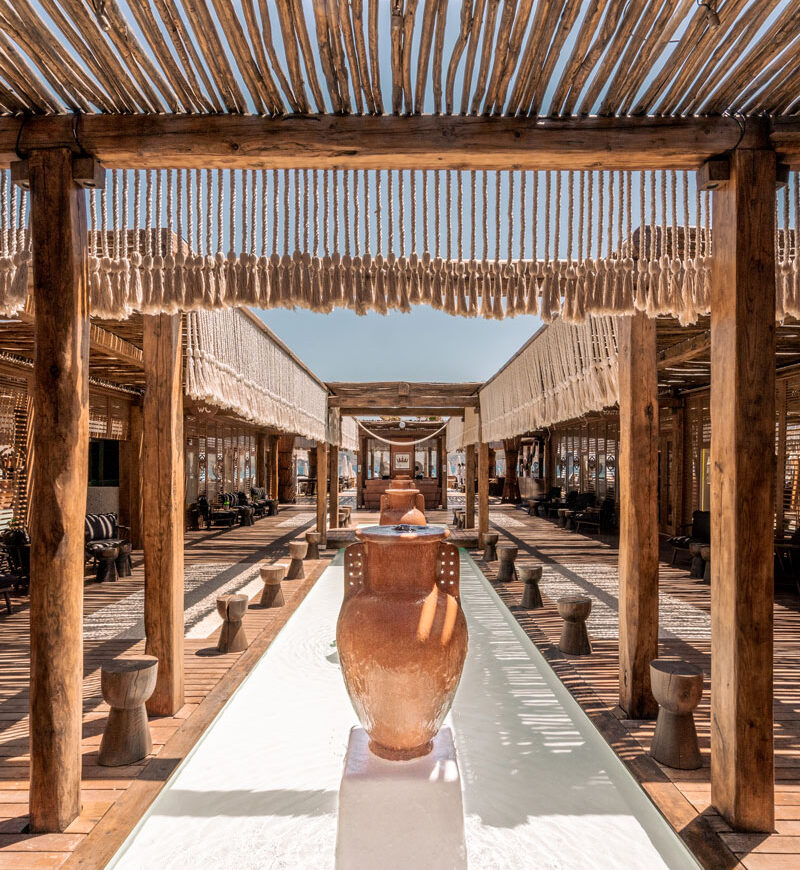
DJ Babis, a Mykonos legend, has been spinning at the top clubs, including Nammos and Princepote, for over 25 years. He currently rules the turntables at what I think is the hottest beach club on the island. Wait for the magic moment when Babis cranks up the music and hundreds of patrons jump up from their lunch and start waving their napkins in the air. Despite shunning fame and social media, Babis is a top draw for celebrities, including Leonardo DiCaprio, Tobey Maguire, and Mariah Carey. A musical prodigy from Athens, Babis began DJing at 17 and moved to Mykonos for its unique energy. Known for reading the room rather than using a setlist, he keeps crowds dancing with instinct and skill. Princepote also offers incredible dining, with its offerings spanning 3 expansive spaces and patios that are conveniently accessible by the sea through the beach club moorings. principote.com
Nammos
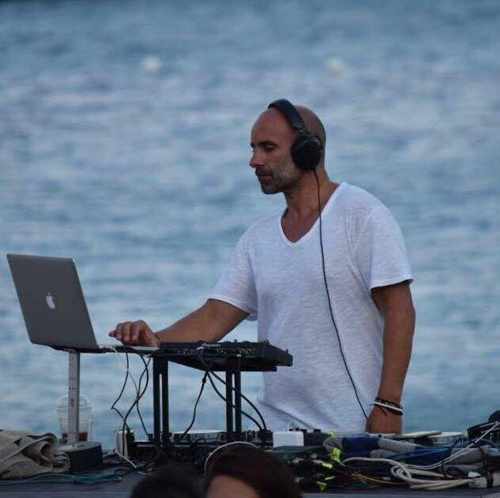
We reserved sunbeds at Nammos to while away one splendid afternoon during our time on Mykonos. This spot on Psarou Beach is perhaps the best-known of the island’s beach clubs and a see-and-be-seen favorite of the jet set. Launched in 2003 on Mykonos, Nammos is so popular that it’s now a high-class brand with locations in Cannes, Dubai, and Limassol in Cyprus. Reservations in advance are a must, but one way to snag a last-minute sun lounger is to stay at the brand-new Nammos Hotel; each booking includes two, impossible to get, sunbeds. nammos.com
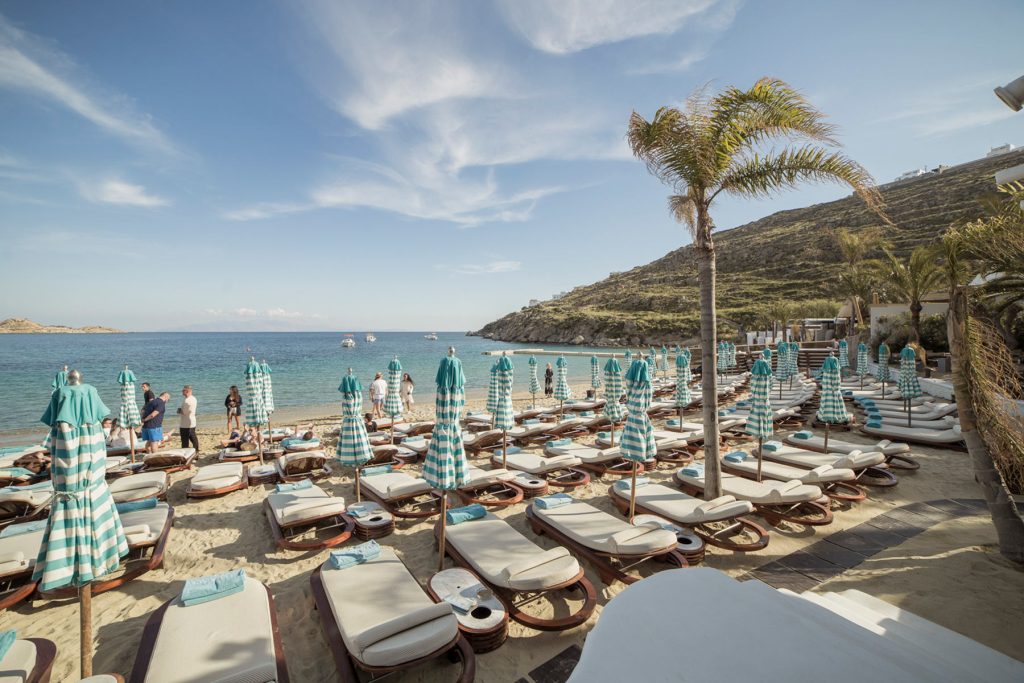
Scorpios
On the secluded Paraga peninsula, Scorpios offers a holistic space with a beach club in the image of a Greek agora. There’s an inspired menu of Greek classics and freshly caught seafood, a Bazaar stocked with handmade Greek kaftans and cool sunglasses. Daytime is chill and relaxed, and sunset brings mellow music. The vibe here is boho chic. scorpios.com
Jackie O’ Beach Club
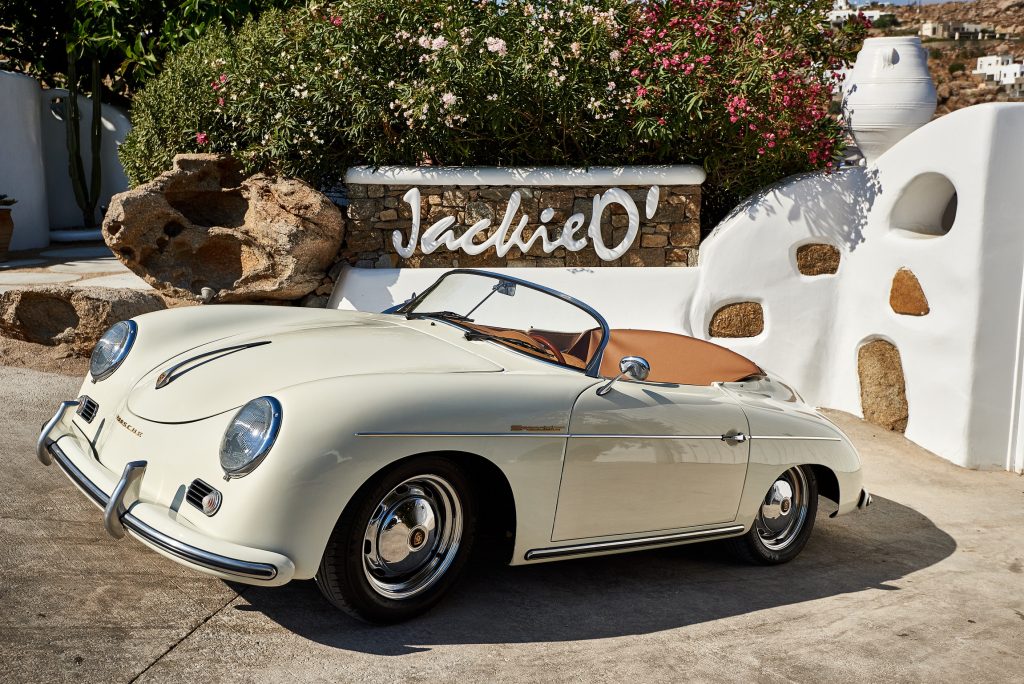
Named after Jacqueline Kennedy Onassis, whose early-1960s visits to Mykonos were pivotal in the island’s rise to fame, JackieO’ is chic, welcoming, and lots of fun. Set on Super Paradise beach, the club also has a restaurant, swimming pool, and Jacuzzi and features regular drag shows in the summer. Like its namesake, the vibe at JackieO’ is effortlessly stylish and unfussy. Come as you are, no jewelry, hair, or makeup is required. jackieomykonos.com
Beefbar on The Coast
Evoking a mid-century jet set cool, sun worshippers at The Coast can order lunch from Beefbar directly to your lounger. Set on the gorgeous bay of Agios Ioannis, the place is accessible by boat with stylish habitues alighting on the private jetty or mooring their yachts in front. Others stay at the elegant hotel at the site. beefbar.com
Athens
On your way to or from Mykonos, I highly recommend spending a few days in Athens. This modern city with ancient roots is a treasure, its historic landmarks like the Parthenon and the Acropolis sit amidst vibrant neighborhoods full of quirky shops, bars, museums, and cafes. Noshing is a must – excellent food is found everywhere in Athens. Here’s a brief guide to some of my favorite sites in this amazing city.
The Acropolis & The Parthenon
The Acropolis, the most famous landmark in Athens, is a large, fortified hill in the center within which lie several ancient structures which have stood overlooking the city for 2,500 years. The Parthenon, located on top of the Acropolis hill, is one of the most prominent buildings in Athens. Built between 447 and 438 B.C. as a temple to Athena, the patron goddess of the city, the Parthenon is probably the world’s most iconic Greek ruin.
We toured the Acropolis and the Parthenon, which has been restored quite a bit since we were last there. Restorations of this ancient site have been ongoing since 1975, so no matter how many times you visit Athens, there’s always something new to see in the Acropolis.
The Erechtheion
There are other interesting sites on the Acropolis too, including. The Erechtheion, where the porch is supported by six columns in the shape of draped women. The Theatre of Dionysus is impressive, and the Acropolis Museum displays many artifacts from this ancient site.
We rode back down in the elevator – yes if you get the right guide, you can not only go to the front of the line with your group, but you can also use the elevator that was put in with funding from the Onassis Foundation. This modern innovation improves accessibility at the site.
Check out Anafiótika, a charming area on the slopes of the Acropolis known for a small cluster of white, island-style homes, reminiscent of Santorini. Wander the streets, poke around the shops, and stop for a drink or a meal at a taverna.
The Grand Bretagne Hotel
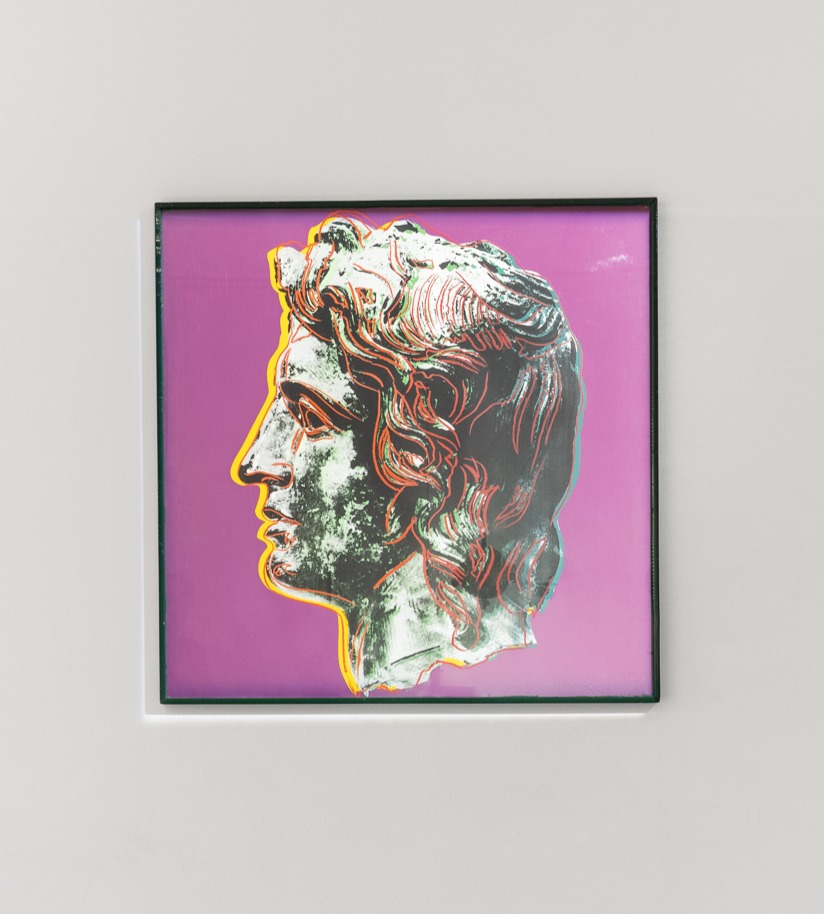
After our walk, we headed to the Plaka, which is opposite the Grand Bretagne Hotel, still the best hotel in town. We strolled in the shade and picked one of many local and authentic Greek restaurants to order the divine grilled octopus. After lunch grab a gelato from one of the spots and then shop and shop and shop. The prices are good and there is a lot to choose from.
Syntagma Square, The National Archaeological Museum
We stopped at the Panathenaic Stadium, where the Olympics were first held over 2,000 years ago. We took a stroll near the ocean and watched the changing of the guard, which takes place hourly in front of the Presidential Palace. The guards with black pom-poms on their shoes, tights, beige skirts, red hats, and long braids do a truly hilarious march that reminded me of show horses lifting their legs and pawing the ground.
The Tomb of the Unknown Soldier, in Syntagma Square, is a moving memorial dedicated to the Greek soldiers lost during World War 1. Nearby is the excellent National Archaeological Museum featuring the best collection of ancient Greek artifacts in the world. History buffs could spend hours here.
The Exárcheia neighborhood was once the home to anarchists, revolutionaries, and artists. A bit of the grit remains, but today it is packed with interesting restaurants, drinking establishments, and bookstores perfect for an afternoon or evening exploration.
Kolonaki, Mount Lycabettus & The Museum Quarter
Kolonáki is Athens’ swankiest central neighborhood and a shopper’s paradise. Even if you’re not in the market for designer goods, this area is worth a visit as it is home to Athens’ Museum Quarter, Mount Lycabettus, and the National Gardens.
Mount Lycabettus is the highest summit in central Athens, offering some of the best views of the city. Huffing and puffing are not required to reach the top; you can take a funicular up the hill.
This area’s museums and galleries include the Benaki Museum of Culture and the Goulandris Museum of Cycladic Art, which both have impressive collections of Greek art and artifacts from prehistoric times to the modern era.
The Byzantine Museum is one of the best in Athens, with an enormous collection of over 25,000 items from the 3rd century A.D. through to medieval times.
The National Gallery has a wide selection of art, and the National Gardens’ extensive grounds are not to be missed. Greece is a trip worth taking!
Check out all my travel stories here

